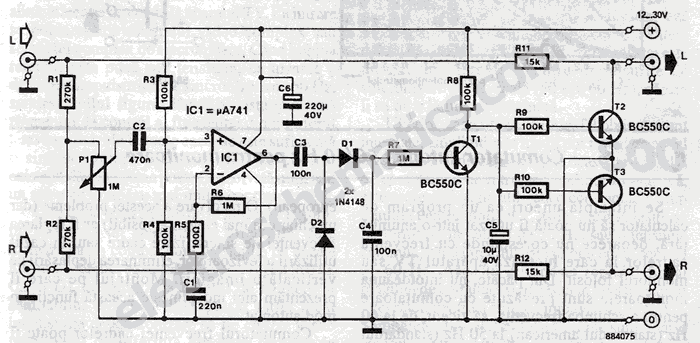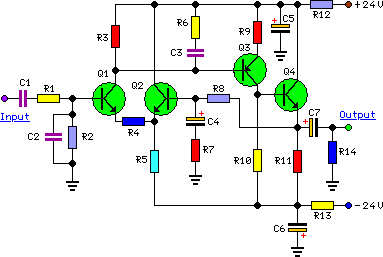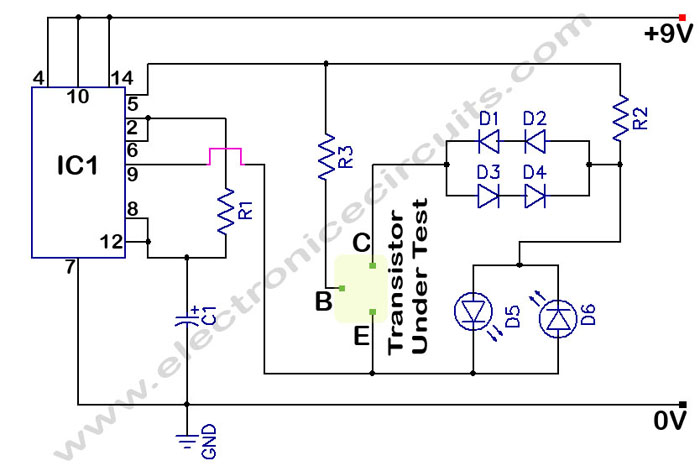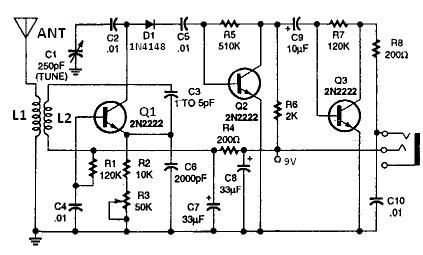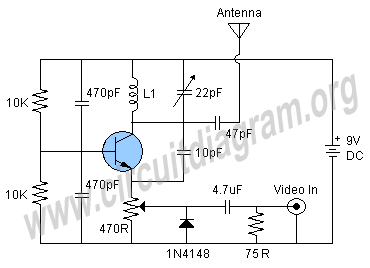
Circuit Project: Small Audio Amplifiers Using LM386 and NE5534
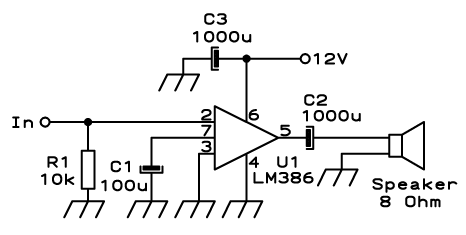
Approximately one watt RMS appears to be a suitable output level, which is also the maximum power that a basic amplifier powered by 12V can deliver to an 8 Ohm speaker. A very low saturation amplifier may reach up to 2 watts, but achieving higher power necessitates either a higher voltage power supply, lower speaker impedance, a bridge circuit, or a combination of these factors. Throughout many years of building electronic devices, a need for small audio amplifiers has arisen, leading to a preference for a few integrated circuit (IC) solutions, primarily the LM386, known for its compact size, low cost, and ease of use. However, it does not provide high-quality audio. For various applications, the benefits of using this chip outweigh its distortion and noise characteristics. In other instances, different chips that offer superior performance were employed, but these often required more complex circuitry and were not always available when needed. Upon upgrading a computer, the older Soundblaster AWE 32 was replaced with a Soundblaster Audigy, which, despite its improvements, lacked an internal audio power amplifier. This posed a challenge for the passive speakers connected to the PC, prompting the construction of a small stereo amplifier using two LM386 chips powered by the available 12V. However, dissatisfaction arose due to the LM386’s performance, which was deemed suitable only for communication-quality audio, akin to telephone fidelity, but inadequate for music reproduction due to excessive distortion. Consequently, a more systematic approach was undertaken to explore small audio amplifiers that could deliver better performance using simple and cost-effective means. A test bench was established with a sine wave oscillator at 1 kHz, an 8 Ohm speaker, a 12V power supply, and a computer equipped with a sound card and Fast Fourier Transform software. One channel was linked to the oscillator and amplifier input, while the other connected to the output and speaker. This setup facilitated the measurement of harmonic content in the audio signals. Tests were conducted at an output level of 0.1W, typical for moderately loud sound from an efficient speaker, alongside music signals from a CD player to evaluate the actual sound quality of each amplifier. As previously mentioned, the LM386's main advantage lies in the simplicity of its application circuit, with the possibility of omitting R1 if the signal source is DC-grounded. For long speaker leads, an RC snubber should be added across the output for stability. Additionally, if higher gain is required (not necessary for line-level inputs), a 10uF capacitor can be connected between pins 1 and 8. However, the circuit exhibited a significant level of distortion, with the second harmonic measured at -28dB from the main output and the third harmonic at -35dB, while the noise level was recorded at -82dB. Various higher harmonics were present at approximately -45dB. The distortion was particularly noticeable with music, and the noise level was uncomfortably high. The power supply rejection was inadequate, allowing some hum and supply noise to pass through, resulting in unsatisfactory performance. Despite utilizing multiple variations of the LM386 in various projects, testing a newer LM386N-1 yielded even poorer results, with the second harmonic at -24dB, the third harmonic at -31dB, and a slight improvement in noise at -84dB. This indicated a total harmonic distortion of nearly 7%.
The circuit design discussed involves the use of the LM386 audio amplifier IC, which is a low-voltage audio power amplifier capable of delivering output power sufficient for driving small speakers. The LM386 is typically employed in applications requiring moderate audio amplification, particularly where space and cost are constraints. The amplifier operates efficiently with a single supply voltage, making it ideal for battery-powered devices.
The circuit configuration is straightforward, featuring minimal external components. The input signal can be fed directly into the amplifier, with the gain set using the resistor and capacitor connected between pins 1 and 8. The output stage connects directly to the speaker, with considerations for stability and noise reduction, particularly in longer lead configurations. An RC snubber may be integrated at the output to mitigate potential oscillations caused by inductive loads.
The performance metrics, including total harmonic distortion (THD) and noise levels, are critical in assessing the quality of the audio output. The noted high levels of distortion and noise indicate that while the LM386 is suitable for basic applications, it may not meet the standards required for high-fidelity audio reproduction. Alternative amplifier designs or higher-grade components may be necessary for applications demanding superior audio quality.
In summary, while the LM386 offers an accessible solution for basic audio amplification, its limitations in audio fidelity and distortion levels should be carefully considered when designing circuits intended for higher quality sound reproduction. For projects requiring better performance, exploring other amplifier IC options or more complex circuit designs may yield more satisfactory results.About one Watt RMS seems to be a convenient size, and this is also about the highest power that a simple amplifier fed from 12V can put into an 8 Ohm speaker. A very low saturation amplifier may go as high up as 2 Watt, but any higher power requires the use of a higher voltage power supply, lower speaker impedance, a bridge circuit, or a combination of those.
During my many years building electronic things I have needed small audio amps many times, and have pretty much standardized on a few IC solutions, first and and foremost the LM386, which is small, cheap, and very easy to use. But it does not produce high quality audio For many applications, the advantages weigh more than the distortion and noise of this chip, so that I used it anyway.
In other cases I used different chips, which perform better but need more complex circuits. Often these chips were no longer available the next time I needed a small amplifier. When I last upgraded my computer, I replaced the old and trusty Soundblaster AWE 32 by a Soundblaster Audigy. The new card is better in many regards, but while the old one had an internal audio power amplifier, the new one doesn`t!
That`s bad news, because I have some pretty decent speakers for the PC, which are fully passive. So, I built a little stereo amp using two LM386 chips and installed it inside the computer, fed by the 12V available internally. But then I wasn`t satisfied. The LM386 might be suitable for communication quality audio, which is roughly the fidelity you get over a telephone, but for music it`s pretty poor!
The distortion was awful. So, the day came when I decided to play a little more scientifically with small audio amps, looking for a way to get good performance with simple and inexpensive means. I set up a test bench with a sine wave oscillator running at 1 kHz, an 8 Ohm speaker, 12V power supply, and the computer with the soundcard and Fast Fourier Transform software.
One channel was connected to the oscillator together with the amplifier input, the other channel to the output and speaker. With this setup I measured the harmonic content of the audio signals. I did the tests at an output level of 0. 1W, which is typical for moderately loud sound from a reasonably efficient speaker. Also, I used a music signal from a CD player to test the actual sound of each amplifier. As already said above, the main attraction of the LM386 is the extreme simplicity of its application circuit.
You can even eliminate R1 if the signal source is DC-grounded. If the speaker leads are long, you should add an RC snubber across the output to aid stability. Additionally, if you need higher gain (not necessary if the input is at line level), you can connect a 10uF capacitor between pins 1 and 8. That`s about all there is to it. Now the bad news: This circuit produced a very high level of distortion! The second harmonic measured just -28dB from the main output. The third harmonic was at -35dB, while the noise level was at -82dB. There were assorted high harmonics at roughly -45dB. With music, the distortion was really disturbing, and also the noise level was uncomfortably high. The power supply rejection is poor, so that some hum and other supply noise gets through. In short, this was a lousy performance! Since I had used so many LM386s in my projects, I had several different variations. In my material box I found a slightly newer LM386N-1. So I plugged it into my test amplifier. It was even worse! The second harmonic was at -24dB, the third harmonic at -31dB, while the noise was a tad better at -84dB.
Folks, that`s a total harmonic distortion of almost 7%! And the 🔗 External reference
The circuit design discussed involves the use of the LM386 audio amplifier IC, which is a low-voltage audio power amplifier capable of delivering output power sufficient for driving small speakers. The LM386 is typically employed in applications requiring moderate audio amplification, particularly where space and cost are constraints. The amplifier operates efficiently with a single supply voltage, making it ideal for battery-powered devices.
The circuit configuration is straightforward, featuring minimal external components. The input signal can be fed directly into the amplifier, with the gain set using the resistor and capacitor connected between pins 1 and 8. The output stage connects directly to the speaker, with considerations for stability and noise reduction, particularly in longer lead configurations. An RC snubber may be integrated at the output to mitigate potential oscillations caused by inductive loads.
The performance metrics, including total harmonic distortion (THD) and noise levels, are critical in assessing the quality of the audio output. The noted high levels of distortion and noise indicate that while the LM386 is suitable for basic applications, it may not meet the standards required for high-fidelity audio reproduction. Alternative amplifier designs or higher-grade components may be necessary for applications demanding superior audio quality.
In summary, while the LM386 offers an accessible solution for basic audio amplification, its limitations in audio fidelity and distortion levels should be carefully considered when designing circuits intended for higher quality sound reproduction. For projects requiring better performance, exploring other amplifier IC options or more complex circuit designs may yield more satisfactory results.About one Watt RMS seems to be a convenient size, and this is also about the highest power that a simple amplifier fed from 12V can put into an 8 Ohm speaker. A very low saturation amplifier may go as high up as 2 Watt, but any higher power requires the use of a higher voltage power supply, lower speaker impedance, a bridge circuit, or a combination of those.
During my many years building electronic things I have needed small audio amps many times, and have pretty much standardized on a few IC solutions, first and and foremost the LM386, which is small, cheap, and very easy to use. But it does not produce high quality audio For many applications, the advantages weigh more than the distortion and noise of this chip, so that I used it anyway.
In other cases I used different chips, which perform better but need more complex circuits. Often these chips were no longer available the next time I needed a small amplifier. When I last upgraded my computer, I replaced the old and trusty Soundblaster AWE 32 by a Soundblaster Audigy. The new card is better in many regards, but while the old one had an internal audio power amplifier, the new one doesn`t!
That`s bad news, because I have some pretty decent speakers for the PC, which are fully passive. So, I built a little stereo amp using two LM386 chips and installed it inside the computer, fed by the 12V available internally. But then I wasn`t satisfied. The LM386 might be suitable for communication quality audio, which is roughly the fidelity you get over a telephone, but for music it`s pretty poor!
The distortion was awful. So, the day came when I decided to play a little more scientifically with small audio amps, looking for a way to get good performance with simple and inexpensive means. I set up a test bench with a sine wave oscillator running at 1 kHz, an 8 Ohm speaker, 12V power supply, and the computer with the soundcard and Fast Fourier Transform software.
One channel was connected to the oscillator together with the amplifier input, the other channel to the output and speaker. With this setup I measured the harmonic content of the audio signals. I did the tests at an output level of 0. 1W, which is typical for moderately loud sound from a reasonably efficient speaker. Also, I used a music signal from a CD player to test the actual sound of each amplifier. As already said above, the main attraction of the LM386 is the extreme simplicity of its application circuit.
You can even eliminate R1 if the signal source is DC-grounded. If the speaker leads are long, you should add an RC snubber across the output to aid stability. Additionally, if you need higher gain (not necessary if the input is at line level), you can connect a 10uF capacitor between pins 1 and 8. That`s about all there is to it. Now the bad news: This circuit produced a very high level of distortion! The second harmonic measured just -28dB from the main output. The third harmonic was at -35dB, while the noise level was at -82dB. There were assorted high harmonics at roughly -45dB. With music, the distortion was really disturbing, and also the noise level was uncomfortably high. The power supply rejection is poor, so that some hum and other supply noise gets through. In short, this was a lousy performance! Since I had used so many LM386s in my projects, I had several different variations. In my material box I found a slightly newer LM386N-1. So I plugged it into my test amplifier. It was even worse! The second harmonic was at -24dB, the third harmonic at -31dB, while the noise was a tad better at -84dB.
Folks, that`s a total harmonic distortion of almost 7%! And the 🔗 External reference
Warning: include(partials/cookie-banner.php): Failed to open stream: Permission denied in /var/www/html/nextgr/view-circuit.php on line 713
Warning: include(): Failed opening 'partials/cookie-banner.php' for inclusion (include_path='.:/usr/share/php') in /var/www/html/nextgr/view-circuit.php on line 713
